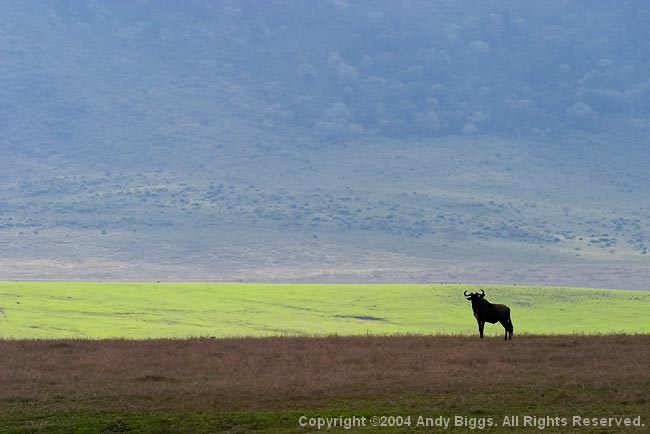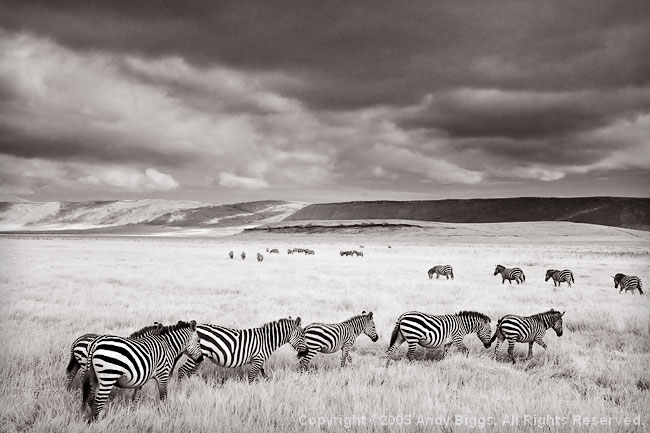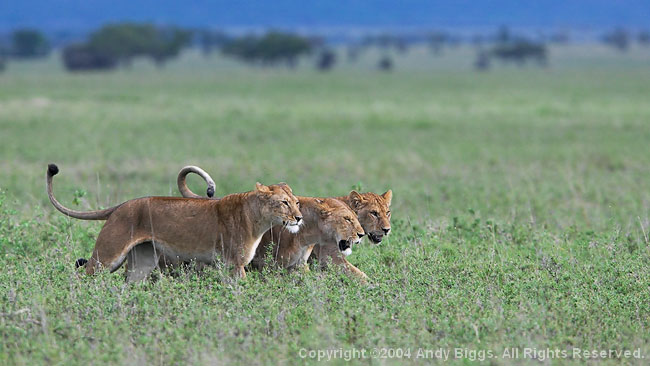Part II: Andy Biggs on Business

JM: Please describe what your business looks like currently - what are your primary sources of income photographically?
AB: For the most part, my photographic business is made up of African photo safaris and domestic workshops. I also have print sales, as well as limited editions of my portfolios. I recently produced a set of 10 limited edition portfolio boxes, and they are mostly sold out. I plan on releasing another portfolio box, made up of only black and white photographs from my African safaris. I have the best job on earth, and I am thankful each day because I have developed wonderful friendships with all of my safari travelers. My biggest asset in my business is my recurring customer base.
JM: Let's talk more about the limited edition portfolio boxes. What is it that you are providing a customer? How are you presenting the material in the boxes?
AB: I noticed that many of the people who purchase my prints would like to own more, or a series of images. Many of my customers find that they don't have the wall space to dedicate to photographic prints, so I came up with the concept of offering a portfolio of images together as a complete set of work. These boxes are hand-made, covered with lined, foil stamped and all have an inset photograph on the front. The clam shell design allows me to put 18 images, along with interleaving sheets, presentation gloves and an artists' statement.
From the front cover:
"This portfolio contains 18 hand made prints, representing countless hours out on safari in the east African countries of Tanzania and Kenya. All of the parks visited to capture these photographs are open to the public, and need to be preserved for future generations.
These hand made prints were printed on archival paper, using an Epson Stylus Pro 4000 printer with Ultrachrome pigment inks. The paper is 100 percent cotton rag Moab Entrada natural 300gsm paper. The prints are printed using Ergosoft's Studioprint, and profiles were created using the Gretag Macbeth Eye-One spectrophotometer. The purpose of this portfolio is to share my love of Africa; its people, landscape and of its wildlife."
JM: How do you market your portfolio boxes and other materials? What do you find to be the most significant challenges?
AB: I only market on my web site, and through casual conversation with people who ask me about the portfolios. I am building up more images for another 2 portfolios, and will offer these sometime in early 2007. The biggest challenge in these portfolios is taking the time to process, print and assemble each box of prints. It takes a ton of time!
JM: Would you like to talk a bit about your first experiences with having your work published?
AB: This is an area that I have neglected so far, unfortunately. I spend most of my time teaching workshops and leading safaris, as opposed to chasing publication opportunities. I forget what my first published work was, but I suspect it wasnít related to what I am doing currently.
JM: What do you feel that the key pieces for running a successful photographic business are (besides taking great photographs)? What other angles do you feel that you need in order to make it work professionally?
AB: I know many incredible nature photographers. The ones that are the most successful are the ones that spend an appropriate amount of time on marketing. So marketing, along with great photography, can often be more important to the sucess of a business than the product itself. Being a good marketer will make or break you. If people donít know who you are, how are they going to use your services or do business with you?

JM: How does your website play into your business?
AB: I have a tendency to like simple things, and this has made my web site follow the same path. My website is my main marketing tool for my business, and I don't want my marketing message to be watered down through an overly complex website.
JM: You were saying that you don't generally chase publications. How do you feel you are best able to promote yourself and to get people to come to you and your website?
AB: My main promotional efforts come through lectures to photography-related clubs, online photography forums and referrals from past safari travelers and students. I also get invited to do lectures at private homes of past travelers, and they invite many of their friends over for a night of dining, photographic slideshows and talks about Africa.
JM: Would you like to talk about the seminars you work on?
AB: Absolutely. I run workships here in the USA as well as in Africa. These workshops are mostly field workshops, where I teach concepts consistent with the level of knowledge of my participants. I believe that no questions are off limits, and no questions are too basic or advanced.
JM: This is a great answer. People come to you for something particular. What do you feel makes your workshops different from Artie Morris or Arte Wolfe (etc)?
AB: I suspect we are all similar in many ways, but what makes each workshop leader different is their personality and how they relate to people. Some are outgoing, some are not. Some prefer to teach the nitty gritty details of the mechanics, and some prefer to teach the creative aspects of photography. It all comes down to being comfortable with who you have selected to be your workshop leader.
JM: What other sources of income do you live off in the photographic business?
AB: I also license my images in the stock photography area. This is an area that I am spending more time on, so my customers can search and locate images in my stock library without having to send me an e-mail or call me to tell me what they are looking for.
JM: You are selling your own stock photography as opposed to through a stock house? How have you found the experience? How have you marketed yourself?
AB: The amount of work can be a burden, but I find that working directly with an art director or art buyer is as rewarding for me as it is for them.
Personal service definitely matters in the market today, as well as competitive pricing. Most of my customers are asking for rights managed images, as opposed to royalty free images, and this made a difference in deciding to handle all of my own stock business myself.

JM: Photographically, can you describe what your 'darkest' days were like? Did you ever consider giving it up professionally?
AB: I havenít really had many dark days so far, as I consider myself new to the game. My biggest challenge to date has been the knee jerk reaction to having a paycheck every few weeks. Being a professional photographer is much different from my old day job as a software consultant, thatís for sure. I used to have a healthy paycheck every few weeks, which was quite nice, but I wouldnít trade my current experiences for a paycheck. Donít take this the wrong way, though, as I love the freedom that working for myself has brought to my life.
JM: Where does your professional education come from?
AB: Well talk about extreme left brain/right brain. I have a few business degrees, one in accounting and one in information systems. I knew when I graduated from college that I had something else in store for my life, but I really had no clue what that would be. I had a successful career in financial software systems consulting.
JM: Is what you are doing today remotely similar to what you had planned? If not, why?
AB: I am doing exactly what I had planned, which is focusing on African safari photo workshops, as well as domestic instructional workshops. I have focused my business around helping other people capture exceptional photographs.
JM: What are your goals looking out 18 months?
AB: With the birth of our first child, I suspect my African safaris will be cut back some, which will allow me to run more domestic workshops. My biggest challenge will be the time spent away from my family, so in a perfect world, we would run a few workshops from a particular location and I could bring my family for the ride. We really love the outdoors, and I will make an effort to remain an outdoors enthusiast after our baby is born - incorporating our lifestyle into our baby's life.
JM: You have a lot coming onto your plate with your new baby (Congratulations, by the way!). Do you think it will be tough to reposition yourself from doing predominantly African Safaris to doing more regional ones?
AB: Thank you! We are excited to have our new baby at home now, and I look forward to the day when he will be out on safari with binoculars or a camera in his hands. I am planning my 2007 and 2008 safaris at the moment, and I am not scaling my trips back quite yet. I will have three trips to Africa in the year, with 2 safari groups on each trip. So my mix will be six safaris a year, and a few domestic workshops sprinkled here and there to fill in the year. In 2007 I have a Galapagos trip that should also be quite exciting.
JM: What advice do you have for people in terms of developing a successful financial strategy for running a photographic business?
AB: Definitely find a niche and be the best at that niche. This helps support whatever marketing message that you have.
JM: You talk about marketing being a key piece in running a successful business. How did you market yourself when you first started? If you had to do it all over again today, what advice would you give on 'where to start?'
AB: When I first started my safaris, my friend Michael Reichmann of Luminous Landscape helped give me some plugs for my safaris. I also had an online presence in some photography internet forums, so people already were familiar with me at that point. If I had to start all over again right now, I am not sure where I would start, because it is a very crowded field right now in the photographic workshop business. Just like in any business, specialization is the key to being successful.
JM: In order to make it professionally as a photographer in our business, do you see having a 'side business' as being essential? In this case, you are doing photo-tourism, which probably makes a significant chunk of your income.
AB: I have to say that most professional photographers need to have multiple business approaches. My main business is teaching workshops in Africa, but I also run a domestic workshops, I sell photographic prints and portfolios, and I am also coming out with my own camera bag product later this year. So I try to have many things going on at the same time, which keeps me very busy.